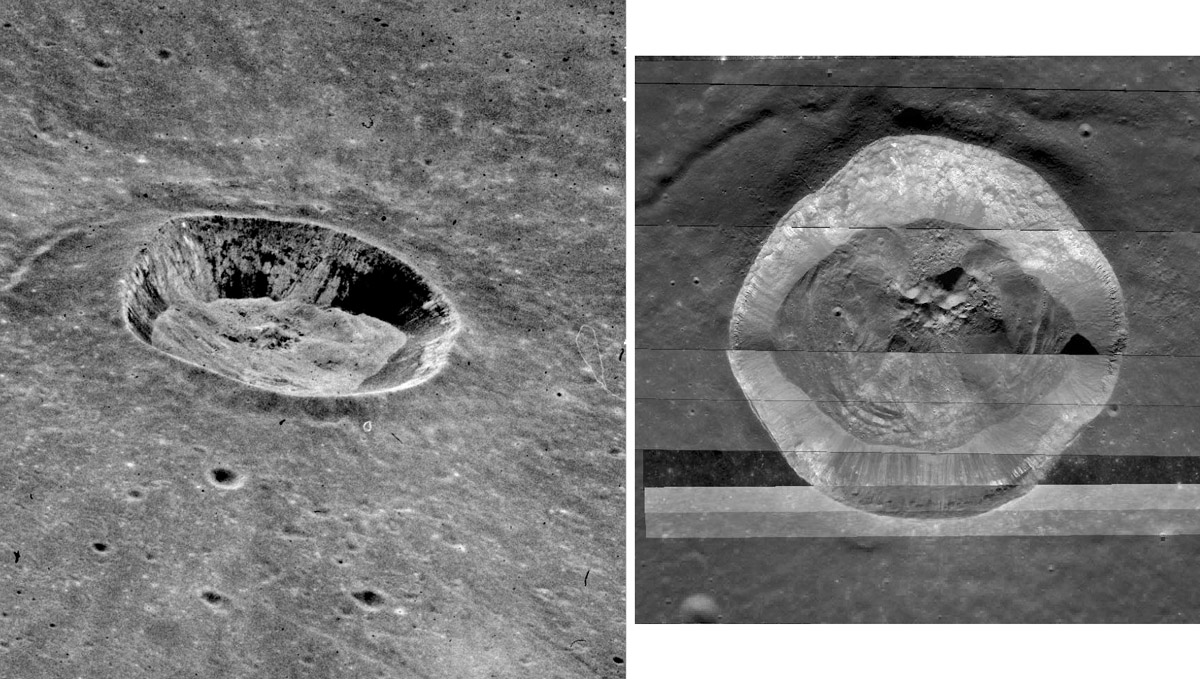Difference between revisions of "August 4, 2012"
| Line 13: | Line 13: | ||
<br /> | <br /> | ||
<hr /> | <hr /> | ||
| + | <!-- Removed reference to store page --> | ||
| + | </div> | ||
| + | ---- | ||
| + | ===COMMENTS?=== | ||
| + | Register, and click on the <b>Discussion</b> tab at the top of the page. | ||
| + | <hr> | ||
| + | You can support LPOD when you buy any book from Amazon thru [[Support_ LPOD|LPOD]]! | ||
| + | <span style="font-size:88%"> | ||
| + | <center> | ||
| + | Contributions to http://www2.lpod.org/ are licensed under a Creative Commons Attribution No-Derivative-Works Non-Commercial 3.0 License. [http://www.creativecommons.org/licenses/by-nc-nd/3.0 http://www.wikispaces.com/i/creativecommons/by-nc-nd_3.0_80x15.png]<br> | ||
| + | </center> | ||
| + | </span> | ||
Revision as of 20:11, 31 January 2015
Rim Ash?

north to left images from Apollo 15M-1408 and LRO QuickMap (right)
Do you recognize this crater? Out of its wider context it may take a minute to identify it as Dawes, the crater in the middle of the passage between maria Tranquillitatis and Serenitatis. The ancient Apollo oblique view at left emphasizes two things: the floor is nearly completely covered with a fine deposit that smoothed irregularities, and the walls have strongly dark and light units. The less contrasty LRO composite mutes the albedo differences and provides information about the floor deposits. Material has cascaded down all of the walls of this 18 km wide crater that is in the transition size from simple to complex morphology. The material is largely free of massive clumps, seeming to be more granular. Looking at enlargements of the LRO view it is clear that the dark material visible on the walls emerges from a nearly continuous layer exposed about 275 m below the rim crest. Individual streamers of dark material that slide downslope create the dark coating seen in the Apollo images. Because Dawes is near a number of rilles (including the odd Dawes Rille) and the Apollo 17 dark mantle deposits it is likely that the dark wall material is from a buried layer of pyroclastics. There is a bright outcrop below the dark layer that makes it easy to determine the dark layer thickness (based on QuickMap altimetry measures) as about 150 m. If the floor materials were darker it would be tempting to say that the floor smoothing is due to collapse of the structureless pyroclastic unit.
Chuck Wood
Related Links
Rükl plate 24
COMMENTS?
Register, and click on the Discussion tab at the top of the page.
You can support LPOD when you buy any book from Amazon thru LPOD!
Contributions to http://www2.lpod.org/ are licensed under a Creative Commons Attribution No-Derivative-Works Non-Commercial 3.0 License. 



